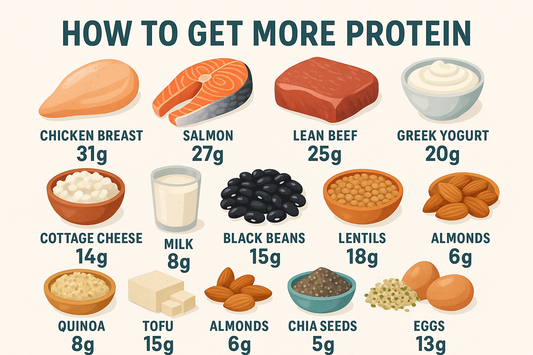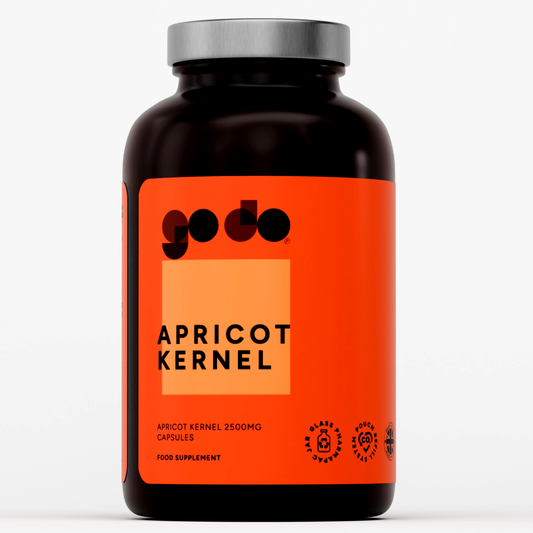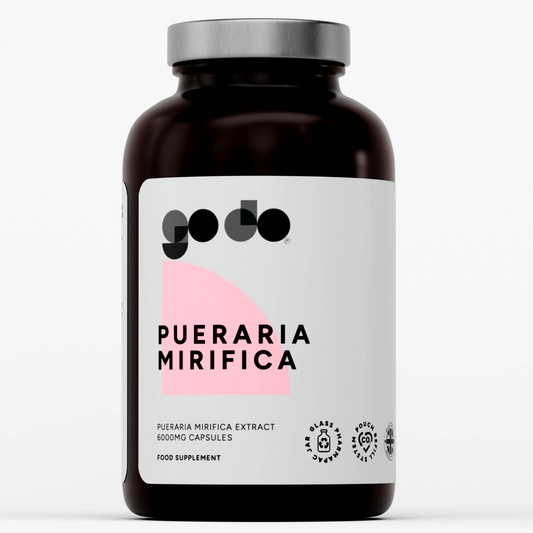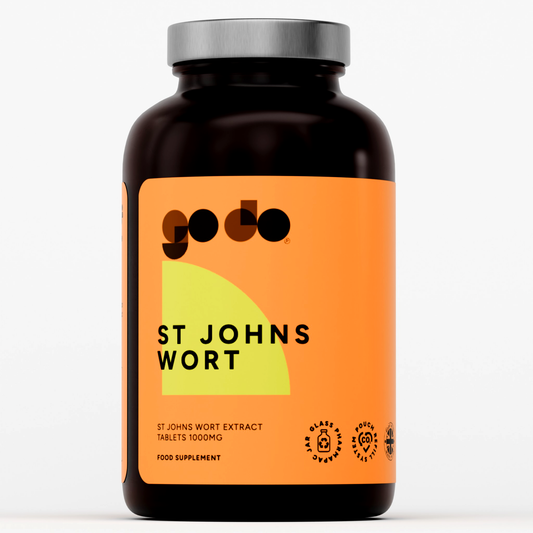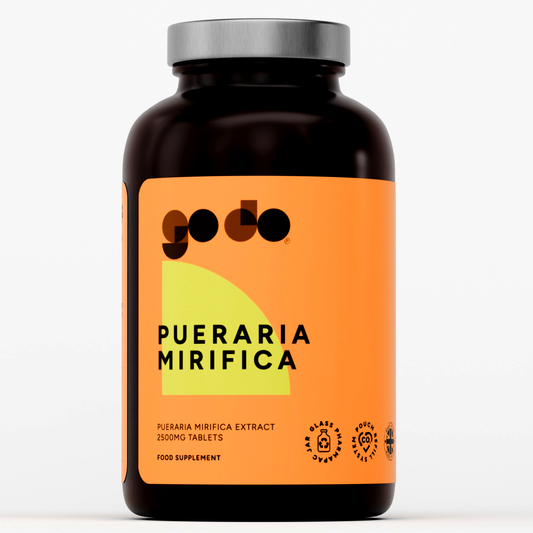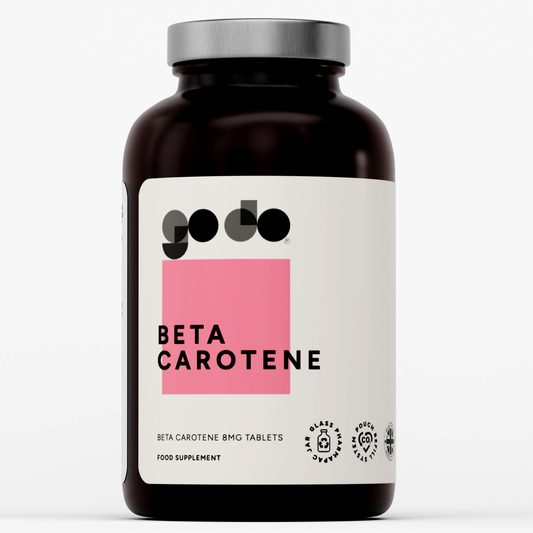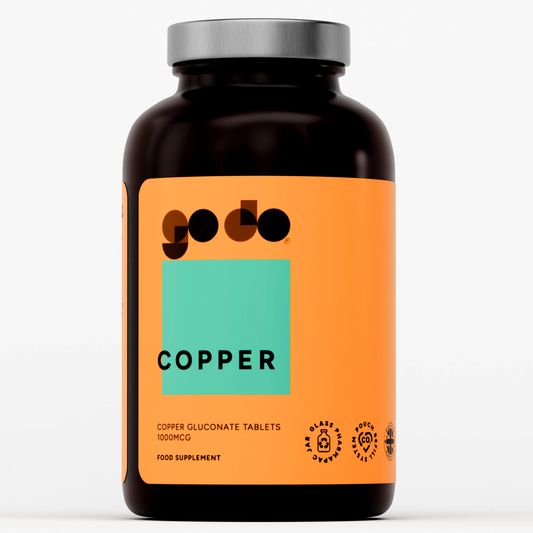How to Bulk Without Getting Fat: Proven Strategies for Lean Muscle Gain
Building substantial muscle mass while minimizing fat gain represents one of the most challenging goals in fitness. The traditional "dirty bulk" approach—eating everything in sight to maximize muscle growth—often results in disappointing outcomes: some muscle gain buried under substantial fat accumulation, followed by lengthy cutting phases that strip away much of the hard-earned muscle, while also being aware of your body fat levels . A smarter approach focuses on controlled caloric surplus, optimized nutrition, strategic training, and patient consistency to build muscle efficiently while staying relatively lean.
Understanding the Muscle-Building Process
Muscle growth (hypertrophy) requires three fundamental components working together, giving you a comprehensive understanding of the science behind process :
Mechanical tension from progressive resistance training provides the primary stimulus for muscle growth. When you lift weights that challenge your muscles through their full range of motion, you create micro-damage to muscle fibers and signal adaptation responses.
Adequate nutrition, particularly sufficient calories and protein, provides the raw materials and energy necessary for tissue repair and growth. Your body needs surplus energy beyond maintenance requirements to build new muscle tissue.
Recovery time allows the actual muscle-building process to occur. Training stimulates growth, but muscles actually grow during rest periods when protein synthesis exceeds protein breakdown, which is essential for a healthy body .
The challenge in bulking is providing sufficient calories and nutrients to maximize muscle growth without creating such a large surplus that you accumulate substantial body fat alongside muscle. The key lies in finding the optimal surplus—large enough to support maximal muscle growth for bodybuilders but small enough to minimize unnecessary fat gain.
The Reality of Muscle Gain Rates
Understanding realistic muscle gain rates prevents both excessive caloric surpluses and frustration with progress:
Beginners (less than 1 year of proper training) can build muscle most rapidly—potentially 1-2 pounds per month under optimal conditions, or roughly 12-24 pounds in their first year. This "newbie gains" period offers the best muscle-to-fat ratio during a bulk.
Intermediate lifters (1-3 years of consistent training) see slower rates—approximately 0.5-1 pound of muscle per month, or 6-12 pounds per year. Progress becomes more gradual as you approach your genetic potential, making it vital to max out your efforts in training .
Advanced lifters (3+ years of training) may only add 2-5 pounds of muscle per year, with gains coming very slowly. At this stage, even small amounts of muscle represent meaningful progress.
These rates assume optimal training, nutrition, recovery, and genetic factors. They also represent muscle tissue alone—total scale weight increases will be higher as you also gain some water, glycogen, and yes, some body fat.
Understanding these realistic rates helps you calibrate your caloric surplus appropriately. If you're gaining weight much faster than these muscle-building rates suggest, you're almost certainly accumulating excessive fat.
Calculating Your Caloric Needs
Successful lean bulking starts with understanding your energy requirements and other important things to consider :
Maintenance calories represent the energy intake where your weight remains stable. You can estimate this through: For those interested in optimizing their physique, it's also crucial to understand the muscle groups every strength training routine should include.
-
Calculation formulas: Various equations estimate maintenance based on age, height, weight, sex, and activity level. The Mifflin-St Jeor equation is reasonably accurate for most people.
-
Tracking method: Monitor your food intake and weight for 2-3 weeks. If weight stays stable, that's approximately your maintenance intake.
The optimal surplus for lean bulking is much smaller than many people think. Research and practical experience suggest:
-
Beginners: 300-500 calorie surplus above maintenance
-
Intermediate lifters: 200-400 calorie surplus
-
Advanced lifters: 100-300 calorie surplus
These modest surpluses support muscle growth while minimizing fat accumulation. Larger surpluses don't accelerate muscle growth proportionally—they just add more fat.
As a practical target, aim for weight gain rates of:
- Beginners: 2-4 pounds per month (0.5-1% of body weight weekly)
- Intermediate: 1-2 pounds per month (0.25-0.5% weekly)
- Advanced: 0.5-1 pound per month (0.1-0.25% weekly)
Adjust based on results: If you're gaining faster than these targets, reduce your surplus. If you're not gaining or strength isn't increasing, add calories gradually (100-200 at a time).
Macronutrient Optimization for Lean Bulking
Beyond total calories, macronutrient distribution significantly impacts body composition during a bulk:
Protein: The Muscle-Building Foundation
Protein intake is crucial for muscle protein synthesis and recovery. Research consistently shows:
Optimal range: 0.7-1.0 grams per pound of body weight daily (1.6-2.2 g/kg). For a 180-pound person, that's 126-180 grams daily.
Higher protein intake during a bulk offers several effective advantages:
- Maximizes muscle protein synthesis
- Higher thermic effect (burns more calories during digestion)
- Greater satiety (helps control total calorie intake)
- Preserves muscle if you accidentally enter a deficit
Protein timing matters somewhat, though less than total daily intake. Aim for:
- 20-40 grams per meal, spread across 3-5 meals
- Pre- and post-workout protein (within 2-3 hours of training)
- Protein before bed to support overnight recovery
Quality sources include: lean meats, poultry, fish, eggs, dairy products, legumes, and protein supplements when needed for convenience.
Carbohydrates: Fuel for Growth
Carbohydrate intake supports training performance, recovery, and muscle growth through several mechanisms:
Optimal range: 2-4 grams per pound of body weight (4-8 g/kg), depending on training volume and individual response. For a 180-pound person, that's 360-720 grams daily.
More active individuals with higher training volumes need more carbohydrates to:
- Fuel high-intensity training sessions
- Replenish muscle glycogen stores
- Support protein synthesis (carbs have a protein-sparing effect)
- Maintain anabolic hormone levels
Carbohydrate timing can optimize performance and recovery: in addition, choosing the best protein foods for bodybuilders is crucial for muscle growth and energy maintenance.
- Pre-workout carbs (1-3 hours before) fuel training intensity
- Intra-workout carbs (during long sessions) maintain performance
- Post-workout carbs accelerate recovery and glycogen replenishment
Quality sources emphasize nutrient-dense complex carbohydrates: whole grains, rice, oats, potatoes, sweet potatoes, fruits, and vegetables. These provide sustained energy, fiber, vitamins, and minerals.
However, some simple carbohydrates around workouts (white rice, fruit, sports drinks) can be beneficial for quick energy and recovery without excessive fiber that might cause digestive discomfort during training.
Fats: Essential for Hormones and Health
Dietary fat supports hormone production (including testosterone), nutrient absorption, and overall health:
Optimal range: 0.3-0.5 grams per pound of body weight (0.7-1.1 g/kg). For a 180-pound person, that's 54-90 grams daily.
Don't go too low on fats—inadequate fat intake can suppress testosterone production and compromise health. But excessively high fat intake during a bulk makes it harder to hit protein and carbohydrate targets within your calorie budget.
Quality sources emphasize unsaturated fats: nuts, seeds, avocados, olive oil, fatty fish (salmon, mackerel, sardines). Include some saturated fats from whole food sources (eggs, dairy, meat) but limit highly processed saturated fats.

Practical Macronutrient Distribution
A typical lean bulk might use to help pack on lean muscl :
- Protein: 25-30% of calories (or the gram targets above)
- Carbohydrates: 45-55% of calories
- Fats: 20-30% of calories
However, individual responses vary. Some people perform better with higher carbohydrates and lower fats, while others prefer moderate carbs and higher fats. Experiment to find what supports your training, recovery, and adherence.

Training Strategies for Lean Muscle Growth
Optimal training during a bulk maximizes muscle growth while managing fatigue and supporting recovery:
Progressive Overload: The Growth Driver
Progressive overload—gradually increasing the demands on your muscles—provides the essential stimulus for growth. Without progression, your muscles adapt and growth stalls.
Methods of progression include:
- Increasing weight: Adding 2.5-5 pounds when you can complete all prescribed reps
- Increasing reps: Performing more repetitions at the same weight
- Increasing sets: Adding training volume over time
- Improving technique: Moving through fuller ranges of motion or controlling tempo better
- Reducing rest: Completing the same work in less time (increases density)
Track your workouts to ensure you're progressing. If you're not getting stronger over weeks and months, you're likely not building muscle optimally.
Compound Movements: Maximum Stimulus
Compound exercises that involve multiple joints and muscle groups should form the foundation of your training:
Essential movements include:
- Squats (back squat, front squat, goblet squat): Build legs, glutes, and core
- Deadlifts (conventional, Romanian, trap bar): Develop posterior chain, back, and grip
- Presses (bench press, overhead press, dips): Build chest, shoulders, and triceps
- Rows (barbell row, dumbbell row, cable row): Develop back thickness
- Pull-ups/chin-ups: Build back width and biceps
These movements allow you to handle heavier loads, recruit more muscle fibers, create greater metabolic stress, and build functional strength alongside muscle mass.
Optimal Training Volume
Training volume (sets × reps × weight) represents one of the strongest predictors of muscle growth; however, nutrition—especially understanding how many calories your breakfast should be—also plays an essential role in supporting your fitness goals.
Current research suggests optimal volume ranges of:
- 10-20 sets per muscle group per week for most intermediate lifters
- Beginners may grow optimally with 8-12 sets
- Advanced lifters might need 15-25+ sets for continued growth
This volume should be spread across 2-3 sessions per muscle group weekly for optimal frequency and recovery.
Periodization helps manage fatigue and progression:
- Accumulation phases: Higher volume, moderate intensity (8-15 rep ranges)
- Intensification phases: Lower volume, higher intensity (3-8 rep ranges)
- Deload weeks: Reduced volume every 4-8 weeks for recovery

Rep Ranges and Muscle Growth
Multiple rep ranges can build muscle effectively:
- Heavy (3-6 reps): Builds strength and myofibrillar hypertrophy
- Moderate (6-12 reps): Optimal for most hypertrophy training
- Higher (12-20+ reps): Creates metabolic stress and sarcoplasmic growth
A balanced program includes emphasis on moderate reps (6-12 range) where you can generate high tension with manageable fatigue, while incorporating some heavy strength work and higher-rep metabolic training.
Cardio During a Bulk: Finding the Balance
Cardiovascular exercise during a bulk presents a mix of benefits and trade-offs. For those aiming for a balanced routine, incorporating strength training, including shoulder exercises with dumbbells you can do at home, can complement your cardio sessions.
Benefits:
- Supports cardiovascular health
- Improves work capacity and recovery
- Burns additional calories (can allow more food while maintaining surplus)
- May improve nutrient partitioning
Potential drawbacks:
- Excessive cardio can interfere with recovery from strength training
- Burns calories that might be needed for muscle growth
- Can increase fatigue and reduce training performance
Recommendations:
- Minimum: 2-3 sessions of 20-30 minutes low-intensity cardio weekly for health
- Moderate approach: 3-4 sessions of 30-40 minutes, keeping intensity manageable
- Avoid: Excessive high-intensity cardio or very long endurance sessions that compromise recovery
Position cardio strategically—separate from leg training by at least several hours, or perform low-intensity cardio on rest days or after upper body training.
Nutrient Timing and Meal Frequency
While total daily intake matters most, strategic timing can optimize results:
Meal Frequency
3-5 meals spaced throughout the day works well for most people, especially for those looking to optimize their workout results with different rep tempos.
Benefits of multiple meals:
- Distributes protein intake for sustained muscle protein synthesis
- Easier to consume large calorie totals without extreme fullness
- Maintains stable energy levels
- Supports consistent training performance
Practical approach: Eat every 3-4 hours, ensuring each meal contains 20-40 grams of protein.
However, some people prefer fewer, larger meals or find success with other patterns. Total daily intake matters more than timing for most people.
Pre-Workout Nutrition
1-3 hours before training, consume:
- 20-40 grams protein (for amino acid availability)
- 30-60+ grams carbohydrates (for energy and performance)
- Moderate fats (for sustained energy, but keep digestible)
This supports training intensity, delays fatigue, and begins the recovery process.

Post-Workout Nutrition
Within 1-2 hours after training, prioritize proper recovery and consider reviewing how often you should work out different muscle groups to optimize your fitness results.
- 20-40 grams fast-digesting protein (whey is ideal)
- 40-80+ grams carbohydrates (to replenish glycogen and spike insulin)
- Lower fat (for faster digestion)
The "anabolic window" is longer than once thought (several hours, not 30 minutes), but post-workout nutrition remains valuable for recovery and adaptation.
Monitoring Progress and Adjusting
Successful lean bulking requires regular assessment and intelligent adjustments:
Key Metrics to Track
Body weight: Weigh yourself daily under consistent conditions (morning, after bathroom, before eating) and track weekly averages. Daily fluctuations are meaningless; weekly trends matter.
Body measurements: Track waist, chest, arms, and legs monthly. Waist circumference helps monitor fat gain—if it's increasing rapidly, you're likely gaining too much fat.
Progress photos: Take consistent photos (same lighting, time of day, poses) every 2-4 weeks. Visual changes often precede measurable ones.
Strength progression: Track key lifts. If strength isn't increasing over weeks and months, you're probably not building muscle optimally.
Body composition testing: DEXA scans, BodPod, or other methods every 8-12 weeks provide objective data on muscle vs. fat gains.
Making Adjustments
If gaining too slowly (below target rates), it's essential to start making adjustments.
- Add 100-200 calories to daily intake
- Reassess training—are you progressing in the gym?
- Check recovery—are you sleeping enough?
- Wait 2-3 weeks and reassess
If gaining too quickly (above target rates):
- Reduce calories by 100-200 daily
- Increase activity slightly (add cardio or daily steps)
- Assess food tracking accuracy
- Wait 2-3 weeks and reassess
If waist is growing disproportionately:
- You're likely gaining too much fat
- Reduce surplus and potentially do a mini-cut (2-4 week diet phase)
- Reassess macronutrient distribution
Common Mistakes That Lead to Excessive
Avoiding these pitfalls keeps your bulk lean:
Excessive caloric surplus: More calories don't equal more muscle beyond a point. The classic "eat everything" approach just adds fat.
Inadequate protein: Consuming insufficient protein limits muscle growth and promotes fat storage from excess calories, potentially leading to gaining fat .
Poor food choices: While flexible dieting allows treats, a diet dominated by processed foods, added sugars, and low-nutrient options makes it harder to control hunger and promotes fat gain.
Inconsistent training: Missing workouts or failing to progress in the gym means extra calories become fat rather than muscle.
Insufficient sleep: Poor sleep impairs recovery, reduces protein synthesis, increases hunger, and promotes fat storage. Aim for 7-9 hours nightly.
Ignoring cardio entirely: Some cardiovascular activity supports health, work capacity, and nutrient partitioning. Complete avoidance isn't optimal.
Bulking too long: Extended bulk phases (6+ months) often lead to excessive fat accumulation. Consider 12-16 week bulk phases followed by maintenance or mini-cuts.
Not tracking anything: Flying blind without monitoring intake, weight, or strength makes it impossible to know if your approach is working.
The Bottom Line
Bulking without getting fat requires a strategic, patient approach that balances sufficient calories for muscle growth to start seeing results. with restraint that minimizes fat accumulation. The key principles include:
Maintain a modest caloric surplus of 200-500 calories above maintenance, adjusted based on training experience and progress rates. Aim for weight gain of 0.5-1% of body weight weekly for beginners, slowing to 0.1-0.25% weekly for advanced lifters.
Prioritize adequate protein (0.7-1.0 g/lb body weight), sufficient carbohydrates to fuel training (2-4 g/lb), and moderate fats for health (0.3-0.5 g/lb). Quality whole foods should dominate your nutrition.
Train with progressive overload, emphasizing compound movements, optimal volume (10-20 sets per muscle group weekly), and a balance of rep ranges. Track your workouts and ensure you're getting stronger.
Include moderate cardiovascular exercise for health and work capacity without compromising recovery from strength training.
Monitor progress through multiple metrics—weight trends, measurements, photos, strength gains, and periodic body composition testing. Make small, data-driven adjustments every 2-3 weeks based on results.
Understand that muscle growth is slow, even under optimal conditions. Patience and consistency over months and years remember that consistent effort builds impressive physiques. Rushing the process with excessive surpluses just adds unnecessary fat that must later be dieted away, which poses a risk of potentially losing some hard-earned muscle in the process.
The most successful bulks are those where you gain primarily muscle with minimal fat, allowing you to stay relatively lean year-round and spend less time cutting and more time building. That's the sustainable path to your best physique.






